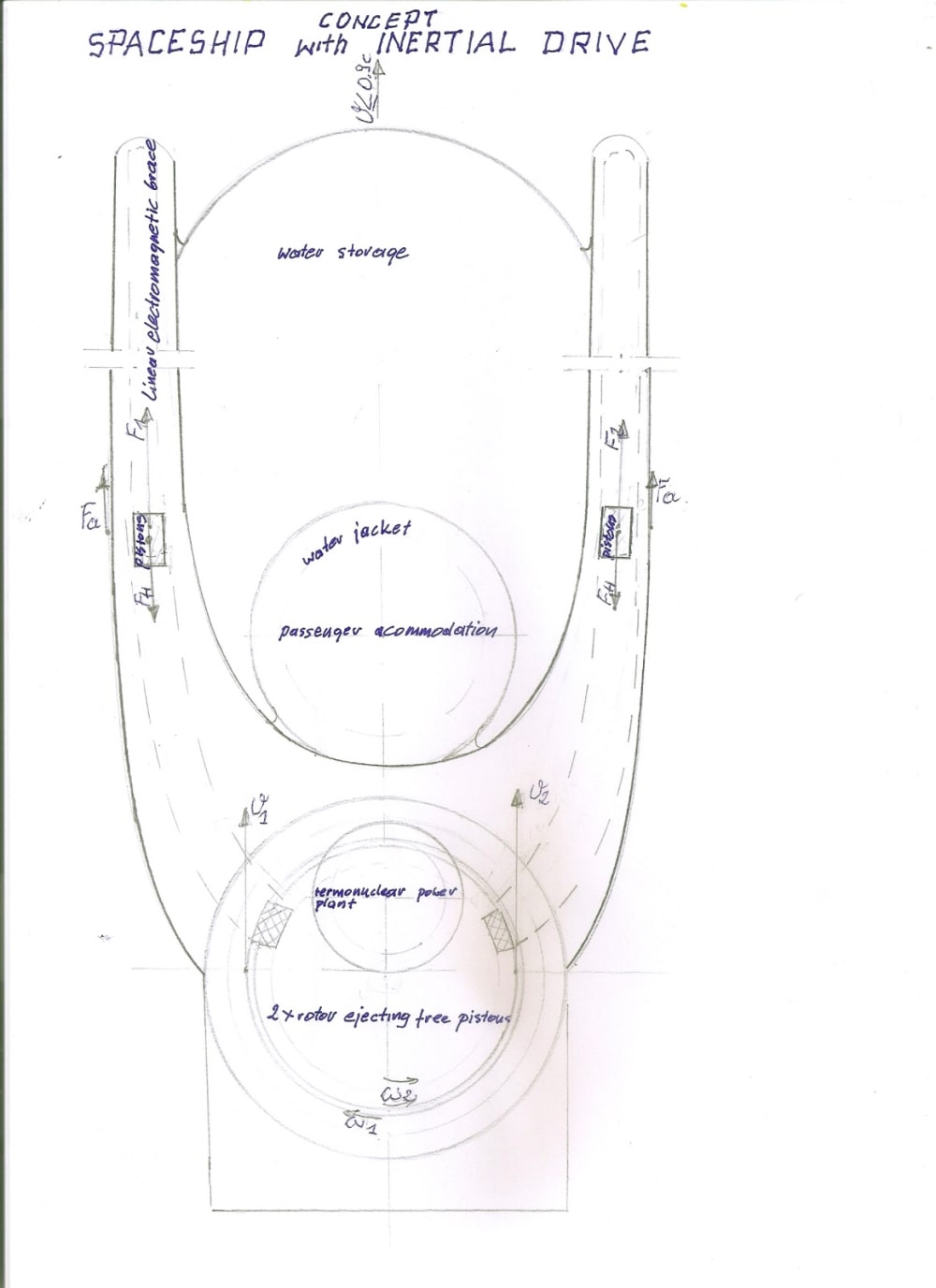The concept of an inertial propulsion spacecraft was developed in response to the limitations of propulsion in the form of low- or high-temperature plasma recoil in current rocket propulsion systems. These limitations mean that the rocket can only achieve a speed that does not exceed the speed of the plasma's ejection from the engine nozzle. There are also limits to the recoil force, and therefore the rocket propulsion force, because traditional processes of fuel combustion or acceleration of the plasma are inefficient.
My idea is to apply the known formula F = mrw ^ 2 to the centrifugal force on a spinning ring. In the presented concept, the rotating ring is released electromagnetically and ejected at high speed, a free piston into the space of a linear electromagnetic brake, according to the formula, v = 2πrn / km / s /. By braking the free piston, the forces that are the difference between the piston's recoil force and the braking force in the superconducting linear electromagnetic brake are transferred by electromagnetic force to the ship's body and propel it forward into space. Reaction forces on the counter-rotating rings that eject the pistons are minimized, due to the recoil of the free pistons further to the side of the recoil direction.
There are no limits to the speed, size and weight of a spacecraft here. Its parameters are limited only by the strength of the materials and the power of the fusion plant and the amount of the energy carrier on board in the form of water. Water also acts as a shield against cosmic rays.
Like this entry?
-
About the Entrant
- Name:Wojciech Zwolak
- Type of entry:individual
- Patent status:none

